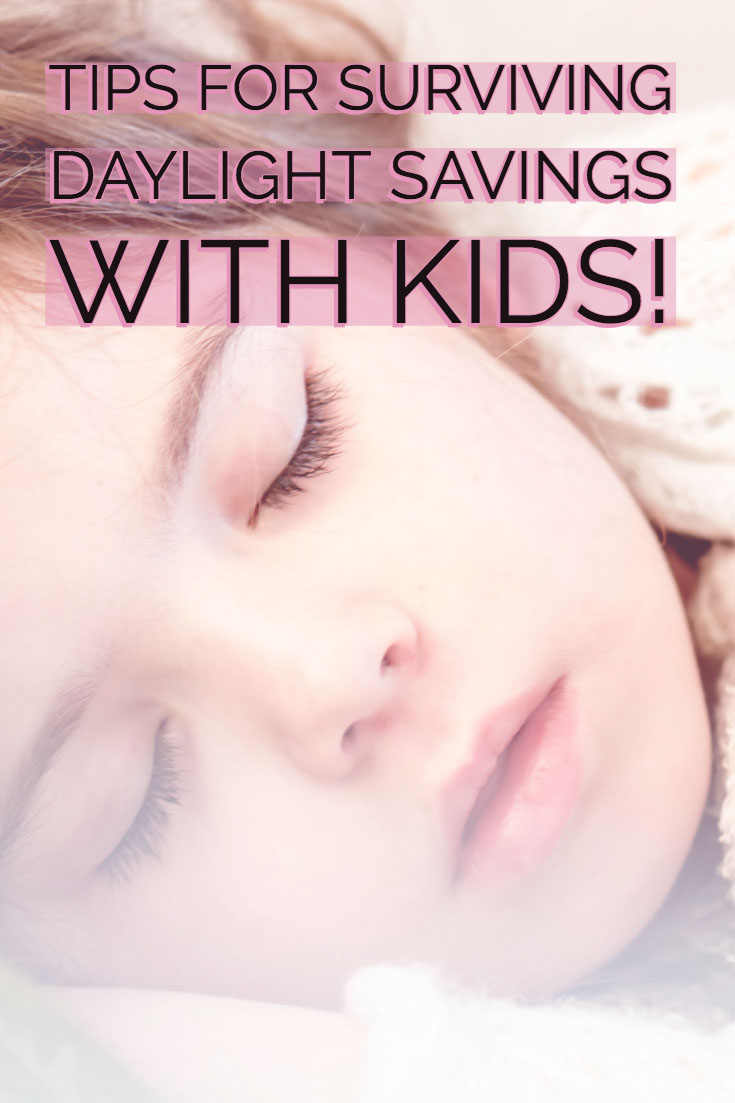Surviving Daylight Savings with kids!
Daylight savings time is officially here! Most parents don’t mind it so much, in the fall when they gain an extra hour, but it sends fear through people’s bones when they hear they are going to have to lose an hour of sleep! Every year I get a TON of questions asking for the best way to handle daylight savings time and children’s sleep. So here it is: If I had my way, there would not be a daylight savings time. I think it really does affect not only children’s sleep patterns but adults, too. In fact, statistically, there is an 8% increase in traffic accidents the Monday after daylight savings time kicks in. It really does have an effect on all of us, and it can increase our sleep debt – especially in children, who tend to be much more structured with going to bed at the same time every night and waking up at the same time every morning. That is usually why people notice it the most in young children.
So what is the best way to handle the time change?
Split the Difference:
For “Fall Back,” I recommend all parents leave their clocks alone, this makes it less psychologically upsetting for your children. Just get up at your usual time and start the day. After your cup of coffee and a bit of breakfast, then you can go around changing the clocks. It will feel much better this way, trust me!
Nap Time change:
If, for example, your little one usually takes a morning nap around 9:30am, adjust it to 9:00am for the three days after the time change. This might be a bit of a push for your child, but it won't cause much damage to their over all schedule. Do the same for the afternoon nap.
Bedtime:
Let’s say your child usually goes to bed at 7 p.m. I recommend putting that child to bed at 6:30 p.m. for the first three days following the time change. (This will FEEL like 7:30 to your child.) And it will take about a week for their body to adjust. It takes everybody’s body roughly one week to adjust any kind of change in sleeping habits.
For Children Over Two:
If you have children over the age of two, you can put a digital clock in the room and put a piece of tape over the minutes, so that they can see if it is 6 o’clock or 7 o’clock, but not the minutes, which often confuses toddlers. Just set the clock forward half an hour so that at 6:30 it says 7:00 and let them get up a little earlier than normal, knowing that, by the end of the week, they will be back on track and sleep until their normal wake-up time.
For Babies:
Do not rush in as soon as you hear your baby waking up, because you do not want to send a message that getting up at 6 a.m. is okay now. So if the baby normally wakes up at 7:00 am, but is now up at 6:00 am, you will wait till ten after the first day, and then twenty after the next, then 6:30 the next day and, by the end of the week, your baby’s schedule should be adjusted to the new time and waking up at their usual hour.
On the fourth night, just get in line with the new time so your baby is back to going to bed when the clock says 7:00 pm. Adjust naps to the correct time on day 4 as well.
Contributing Writer and sleep expert:
Kayla Grundorf, Owner of Keep Asleep with Kayla LLC
 Kayla is a wife and mother to a rambunctious two-year-old son. She is the Owner of Keep Asleep with Kayla LLC and a US Army Veteran. Kayla is a pediatric sleep consultant certified through the “The Sleep Sense Program” by Dana Obleman. Kayla helps families with little ones aged Newborn up to 11 years old to learn independent sleep skills. She is Atlanta based but has helped families all over the world. "I love helping families get the sleep they all need and deserve!"
Kayla is a wife and mother to a rambunctious two-year-old son. She is the Owner of Keep Asleep with Kayla LLC and a US Army Veteran. Kayla is a pediatric sleep consultant certified through the “The Sleep Sense Program” by Dana Obleman. Kayla helps families with little ones aged Newborn up to 11 years old to learn independent sleep skills. She is Atlanta based but has helped families all over the world. "I love helping families get the sleep they all need and deserve!"
For more questions about children and babies adjusting to daylight savings time, Kayla can be reached at keepasleepwithkayla@gmail.com


